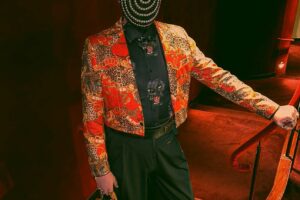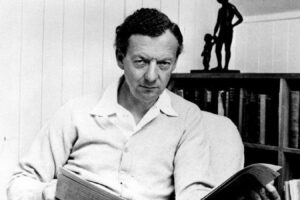
In spite of sounding like an indelicate football injury, I Lombardi alla prima crociata was only Giuseppe Verdi’s fourth opera. The nifty “Introduction to…” on this new DVD release
from C Major to honor the Maestro’s approaching bicentennial includes some very interesting facts about the work.
Its premiere at La Scala in 1843 solidified Verdi’s reputation following Nabucco and was his first work to be performed in the United States. After significant revisions in 1847, including a translation into French and retitled Jérusalem, it was also the composer’s first success at L’Opéra.
It goes on to impart the dispiriting information that it stands near to the very end of of the popular performance scale of Verdi’s works at number twenty-two. This is a shame because in spite of its four acts and eleven scenes suffering from some major operatic sprawl, it is a spirited work with stirring ensembles and beautifully rendered choruses.
When I saw that the Teatro Regio di Parma was the partner in this ginormous project to produce live performances of all of Verdi’s works it gave me pause. Historically the home theatre of Verdi and Arturo Toscanini it hasn’t actually been on the forefront of operatic world centers. This production proves why.
Conductor Daniele Callegari entered the pit to what I thought was an unusually cool reception until I realized this jewel box doesn’t accommodate that many people. As the brief prelude begins the curtain parts and we are almost immediately transported to 1950’s Italy and the land of the semaphore gesture. It’s opera for the deaf. It wouldn’t be so bad if we had Renata Tebaldi and Mario del Monaco up there with voices set to stun, but no such luck here, I’m afraid. What we do have is a decidedly B-list cast of singers about to give it to us old trouper style.
I’ll spare you the plot which is so convoluted it makes Trovatore appear as uncomplicated as Jack and Jill. Suffice to say that the lovers, Oronte and Giselda, don’t even appear on stage together until Act III Scene I and by the time the next act rolls around he’s singing his lines post mortem. Meanwhile, we’ve still got another 20 minutes to draw this epic to a conclusion.
Bass-baritone Michele Pertusi, who plays the villain Pagano, manages to leave the stage with most of his dignity intact. After a very wooly start in Scene I his voice clears itself up enough to make a solid impression during his big scena in Act II,”E ancor silenzio!”. He’s certainly got long-breathed phrasing which neatly match his wide-open gestures to prove he’s feeling emotions “this big!” He starts the opera dressed exactly as the Mandarin from the Zeffirelli Met Turandot and then ends it garbed as one of the Sith Lords from Star Wars. Along the way he sustains not only a religious conversion and the loss of an eye a là Wotan, but a wicked bout of alopecia to boot.
Roberto De Biasio sings the secondary tenor role of Arvino, the heroine’s father. He’s got a sturdy voice that tends to the monochromatic. The only reason I can figure why he ends up with top billing on the box cover is that they’re listing by order of appearance.
Our friend Francesco Meli—from the Vienna Bolena with Netrebko—here is the hapless Oronte. He shambles onto the stage in a wig that makes him look like a cocker spaniel and proceeds to sings as loudly as he possibly can. More acting with the arms, flapping them about so much I thought surely he would take flight.
I don’t care what pitch he’s singing (apparently neither does he), but his phrasing is square and his technique effortful. Once he’s warmed up he gets even louder but always manages to get the biggest applause of the evening every time he stops singing. (Does his mom get comp tickets?)
Which brings us to Dimitra Theodossiou as Giselda, who should be way more exciting than she actually is. She certainly has the technique for the role and it’s a killer. She sings all that high piano stuff in the fake place and she’s definitely been watching her Aprile Millo videos at home because she’s holding her arms aloft in that familiar gesture of “Descend to me, ye spirits of sopranos past!”
The director even pays her the great compliment of bringing a drop curtain down behind her so she can sing her last act cabaletta,”Non fu sogno!” directly to the audience. Alas, to no avail. Her performance just never takes fire or displays even the slightest signs of being demented. Sadly, the director seems to think she looks sincerest on her knees.
The entire opera is performed in front of a giant stone wall designed by Paolo Bregni with pastel drawings projected on it to suggest the various locations of the plot. When the chorus gets particularly martial, suddenly we go into the Junior High School “Horrors of War” PowerPoint presentation with lots of concentration camp victims and Picasso’s Guernica. You don’t have to knock me over the head.
During the great choral opener to Act III , “Gerusalem,” the wall at the back finally reveals itself to be the actual Western Wall with a line of modern-day Orthodox Jews davening upstage while the chorus sings. Though not exactly relevant to this action, this scene provides a touching moment in an evening almost completely devoid of pathos or drama.
The Director, Lamberto Puggelli, seems more than happy with having everyone line up at the front of the stage and sing out at the audience, with no need for frills like interaction or character development. Lighting by Andrea Borelli isn’t up to first world standards but you have to admit it’s colorful.
Since the chorus gets some of the best music in this piece, I wish the Parmigiani had been up to the task. They look to number about 50 total but rarely sing with gusto and never, ever take their eyes off the conductor. There’s also some seriously half-hearted banner waving that is not to be believed.
The costume plot of Santuzza Cali aspires to include every color of the spectrum, sometimes all at the same time, like some tie-dyed muumuus for Mme. Theodossiou from the Beatrice Arthur collection.
Callegari leads a strong performance from the pit and the orchestra of the Teatro Regio certainly knows how to play Verdi. He does nothing exceptional besides keeping everyone together and certainly doesn’t seem to be inspiring anyone to better themselves.
The concert master plays the violin prelude to the great trio in Act III quite well, winning a solo curtain call. Sadly, his name is not to be found on the end credits or in the booklet or on the box. I’d sue.
Picture and sound are very good and I believe all these titles are being released on DVD andBblu-ray simultaneously. Inspite of a nearly empty shelf when it comes to this opera I don’t think I can recommend this one except to die-hard completists. Not that there’s anything wrong with an old-fashioned stand up and sing kind of evening—except when it almost completely lacks inspiration and excitement.



























Comments